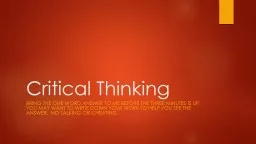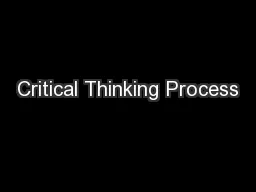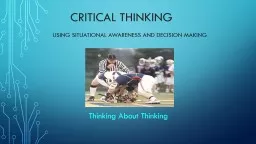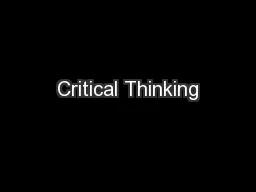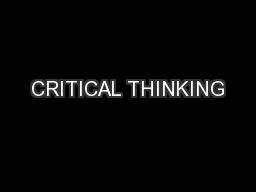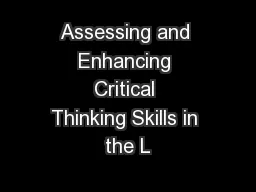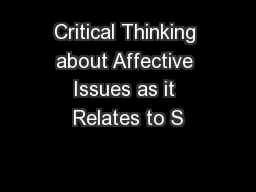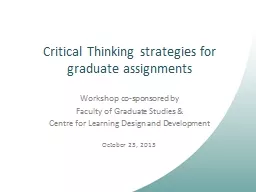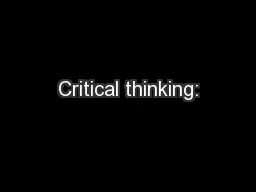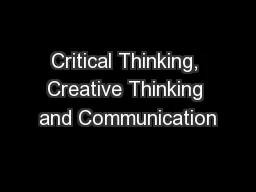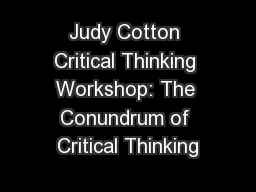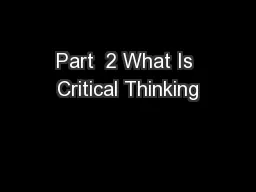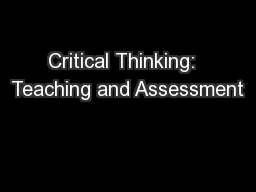PPT-Critical Thinking Bring the one word answer to me before the three minutes is up. You
Author : lindy-dunigan | Published Date : 2018-11-23
The Riddle The following verse spells out a word letter by letter My first refers to the words first letter and so on Whats the word that this verse describes
Presentation Embed Code
Download Presentation
Download Presentation The PPT/PDF document "Critical Thinking Bring the one word an..." is the property of its rightful owner. Permission is granted to download and print the materials on this website for personal, non-commercial use only, and to display it on your personal computer provided you do not modify the materials and that you retain all copyright notices contained in the materials. By downloading content from our website, you accept the terms of this agreement.
Critical Thinking Bring the one word answer to me before the three minutes is up. You: Transcript
Download Rules Of Document
"Critical Thinking Bring the one word answer to me before the three minutes is up. You"The content belongs to its owner. You may download and print it for personal use, without modification, and keep all copyright notices. By downloading, you agree to these terms.
Related Documents

